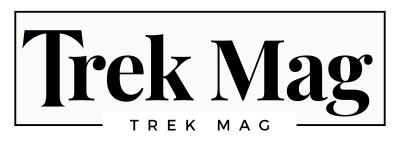Wire electrical discharge machining is a precision manufacturing process that uses an electrically charged thin wire to cut conductive materials. Unlike many cutting techniques, wire EDM is noncontact and makes accurate cuts that may not need further processing. A crucial component of wire EDM is cutting fluids that serve various functions.
These fluids control the electrical discharge and cool the machining area to prevent thermal damage. There are many cutting fluids you can use for wire EDM each with its unique properties and benefits. This article discusses the different dielectric fluids in wire electrical discharge machining and key factors to consider in choosing the right one.
What is the Importance of the Cutting Fluids in Wire EDM
Cutting fluids, also known as dielectric fluids, are important aspects of the wire EDM process. They serve distinct purposes and act as electrical insulators and coolants to optimize the cutting operation. Cutting fluids in the wire EDM operation has various functions which include
Dielectric Medium: The cutting fluids act as a dielectric medium in wire EDM. It surrounds the workpiece and wire electrode and creates a barrier between them. Hence, when you apply voltage, the electrical discharge occurs in a controlled manner through the fluid.
Debris Removal: Cutting fluids also aid in the removal of debris when cutting a workpiece. The fluid flows continuously to prevent the accumulation of melted materials that can interfere with subsequent discharges. Additionally, these fluids have lubricating properties that contribute to a finer cut and improved surface finish.
Cooling: Another function of dielectric fluids is to serve as a cooling system. The electric sparks in the wire EDM process generate heat with time. Cutting fluids ensures proper dissipation and absorbs the heat. This helps to prevent thermal damages such as warping, micro cracking, and changes in the properties of the workpiece.
Improved Productivity: Using a good cutting fluid helps to increase productivity in many ways. These fluids increase machining speed and feed rate without compromising the finish. Furthermore, cutting fluids reduces wire breakage, improves accuracy, and maintains a stable cutting process.
Types of Cutting Fluids for Wire EDM
There are different types of cutting fluids you can use for wire EDM with the most common being deionized water. These fluids have unique characteristics that make them ideal for this process
-
Water-Based Fluids
Water-based fluids are the most popular type of cutting fluids used for wire EDM. Examples of water-based fluids include deionized water and ion-exchange water with additives. Water-based fluids are cheap, environmentally friendly, and have excellent cooling properties. Additionally, they are readily available and produce fewer harmful byproducts.
However, these cutting fluids have moderate dielectric strength which can further be compromised due to the accumulation of ions during the cutting process.
-
Mineral-Oil Based Fluids
You can also use pure mineral oil or those with additives as the cutting fluid. The additives help to enhance the properties of the fluid. Mineral oil-based fluids have good dielectric strength and evenly dissipate heat during the wire EDM operation. Furthermore, their lubrication capabilities are second to one. These fluids help to minimize friction and prevent wire breakage.
The downside of using mineral oil-based fluids is the limited cutting speed and susceptibility to thermal degradation. Additionally, you may find it challenging to dispose of them in an environmentally friendly way.
-
Synthetic Fluids
Synthetic fluids are made up of synthetic base stock and other additives. Synthetic fluids can either be water-based, oil-based, or a hybrid. These cutting fluids perform better than the mineral-based ones because of their tailored characteristics.
Synthetic fluids have excellent dielectric properties and they adequately cool and flush away debris. Furthermore, most of them are resistant to degradation and you don’t have to change them often. However, they are more expensive and may not be compatible with some machine components.
-
Low Viscosity Fluids
Low viscosity fluids are thinner and flow easily which makes them suitable when cutting at a high speed. Their lower viscosity also enhances the flushing capabilities. When using low-viscosity fluids, they reach tight gaps to adequately flush away debris and cool the workpiece.
Additionally, they have better dielectric performance and produce a good surface finish. These cutting fluids especially the water-based ones evaporate quickly and need frequent replacement. They offer less lubrication and are more prone to foaming.
-
Special Fluids
Special fluids are carefully formulated cutting fluids that aim to meet specific machining demands. Special fluids can be graphite-based, oil-in-water-based, or liquids with high dielectric strength. They all provide unique benefits and you use them for different applications.
Most special fluids are safe, nonvolatile, and perform well when cutting complex geometries. They improve the surface quality and extend machine life. The major limitation of special fluids is their high cost and limited availability.
Key Considerations for Choosing Cutting Fluid for Wire EDM
When deciding on the best-cutting fluid for your wire EDM project, you should consider the following factors.
-
Material Type
The material you are working with is a major consideration. For instance, hard metals require cutting fluids with optimal cooling properties to prevent heat build-up. Furthermore, go for fluids that include additives that prevent rust formation when working with metals prone to corrosive attack.
-
Desired Surface Finish
The desired level of surface smoothness will also influence your choice. When using fluids with high dielectric strength, the discharges are small and controlled. The result is a smooth and glossy finish. Furthermore, fluids that flush the debris properly will achieve a consistent finish.
-
Processing Speed
The cutting fluid you are using significantly impacts the machining speed. Fluids with optimized dielectric strength enable a higher frequency of controlled sparks which increase the rate of material removal. Furthermore, when cutting at a high speed, go for fluids with superior cooling properties.
-
Machine Specification
The particular type and model of a wire electrical discharge machine also determines the cutting fluid. Oftentimes, manufacturers specify the most suitable cutting fluid you should use for their brand. The fluid must match the machine’s electrical parameters to maintain a stable spark gap.
-
Environmental and Safety Concerns
When selecting a dielectric fluid, you should also consider the environment and safety issues. Go for cutting fluids that are biodegradable, nontoxic, and easily recyclable. Furthermore, some cutting fluids are volatile and have an increased risk of explosion.
Conclusion
Cutting fluids plays a vital role in the wire EDM process. While deionized water may be the most popular, there are other types you can use for your project. However, it is important to carefully select the type of cutting fluid to get superior results. When making your choice, consider the properties of the metal and the desired surface finish. You should also keep in mind the processing speed, machine specifications, and safety concerns. Do you have questions or inquiries? Reach out to a reputable wire EDM service provider to clear all your doubts.








